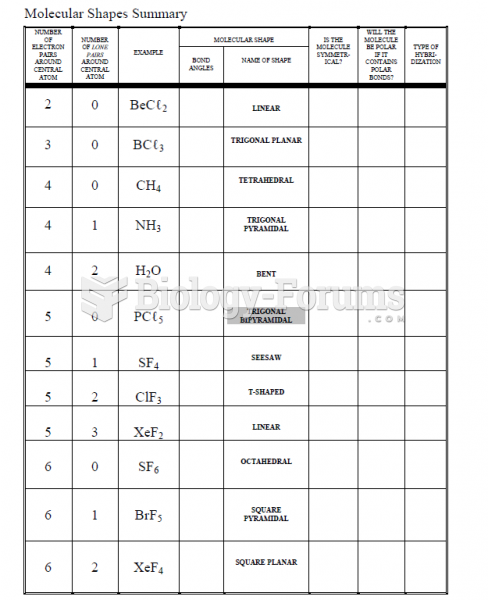|
|
|
The top five reasons that children stay home from school are as follows: colds, stomach flu (gastroenteritis), ear infection (otitis media), pink eye (conjunctivitis), and sore throat.
Giardia is one of the most common intestinal parasites worldwide, and infects up to 20% of the world population, mostly in poorer countries with inadequate sanitation. Infections are most common in children, though chronic Giardia is more common in adults.
Although the Roman numeral for the number 4 has always been taught to have been "IV," according to historians, the ancient Romans probably used "IIII" most of the time. This is partially backed up by the fact that early grandfather clocks displayed IIII for the number 4 instead of IV. Early clockmakers apparently thought that the IIII balanced out the VIII (used for the number 8) on the clock face and that it just looked better.
The first war in which wide-scale use of anesthetics occurred was the Civil War, and 80% of all wounds were in the extremities.
Dogs have been used in studies to detect various cancers in human subjects. They have been trained to sniff breath samples from humans that were collected by having them breathe into special tubes. These people included 55 lung cancer patients, 31 breast cancer patients, and 83 cancer-free patients. The dogs detected 54 of the 55 lung cancer patients as having cancer, detected 28 of the 31 breast cancer patients, and gave only three false-positive results (detecting cancer in people who didn't have it).
 Examples of pessaries. (A) Various shapes and sizes of pessaries available. (B) Insertion of one typ
Examples of pessaries. (A) Various shapes and sizes of pessaries available. (B) Insertion of one typ
 Looking at objects in nature is a great way to encourage joint attention and allows infants to learn ...
Looking at objects in nature is a great way to encourage joint attention and allows infants to learn ...
 As immigrants assimilate into a new culture, they learn and adapt new customs. This photo was taken ...
As immigrants assimilate into a new culture, they learn and adapt new customs. This photo was taken ...




